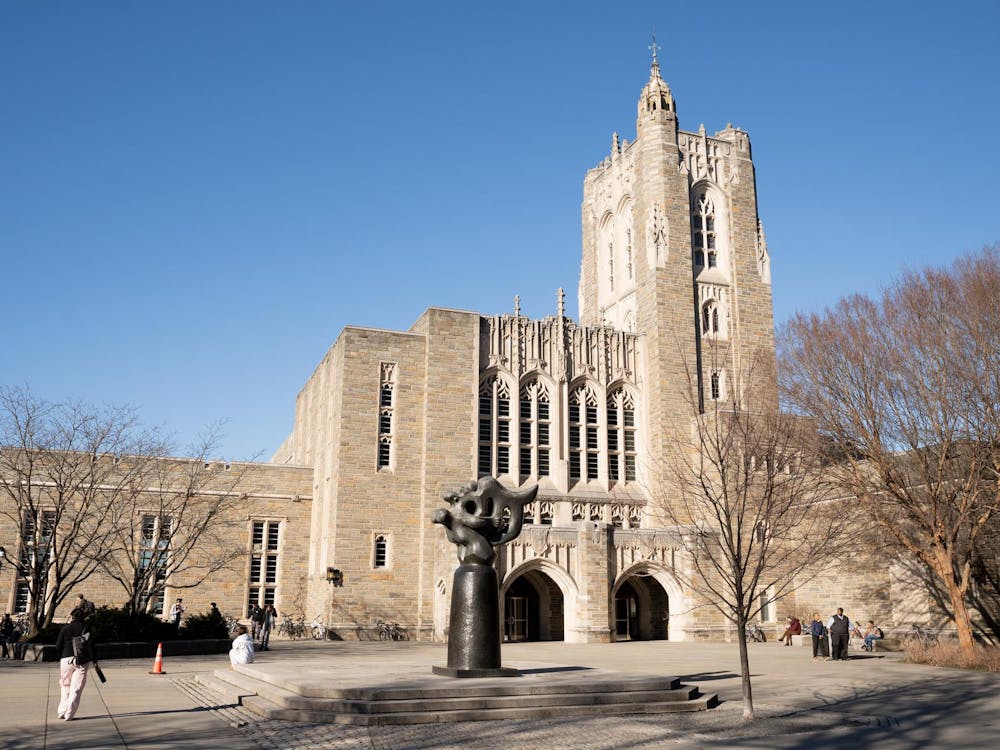In 2023, Princeton took a recent graduate to court over $7,000 in defaulted student loans. At the same time, the University had an endowment of $34 billion dollars, increasing at an average annual rate of 9.9% over most of its current students' lifetimes and standing at 62% above its value ten years before. And that $7,000 case was not the only one of its kind: Princeton has launched multiple lawsuits against recent graduates over nonpayment of student debt.
For all the buzz about Princeton’s “no-loan” financial aid policy, a shocking share of Princeton students walk away with burdensome loans. Princeton claims to be no-loan because they eliminated the “student contribution,” which students were expected to pay. But the “family contribution,” assessed from one’s family income and wealth, is burdensome for many.
Princeton reported that 11 percent of this year’s recent seniors graduated with debt — and 17 percent of “recent seniors” last year did. And that only counts loans taken out by students themselves — not including loans covered by students’ families and guardians, which Princeton does not report. This is unacceptable: Princeton advertises a no-loan education, and they should make it true. This means rethinking the family contribution to account for taxes and family situation, offering better-quality loans for students, and lowering, or potentially eliminating, tuition.
First, taking a hard look at how Princeton decides affordability is critical. Princeton’s family contribution is calculated as “25 percent of income over $100,000 and 5 percent of student and parent assets over $150,000.” Twenty-five percent of income — outside of essentials — seems reasonable to spend on one child of the average four-person household, right?
Not so fast. In my Class of 2026, 40 percent of us have more than one sibling, busting the one-quarter of income, one-quarter of the family idea. But there’s another sneakier and more pervasive problem: Princeton contributions are assessed from pre-tax income.
Consider an example: a four-member family with a household income of $200,000 in Trenton, N.J. As a solidly upper-middle-class family unit, Princeton expects them to pay $25,000 based on their pre-tax income. This is 12.5 percent of their total pre-tax income.
But here’s where it gets interesting: most American families pay around 25 percent of income to federal, state, and local taxes. This family has a tax rate of around 28.6 percent, so their after-tax income is about $143,000. So, Princeton is actually taking 58 percent of their after-tax income over $100,000.
With this case in mind, it’s easy to see how 10 to 20 percent of Princeton students end up with personal loans, with many more likely taken out by parents as well. And where does it leave them? As recently as Sept. 17, Princeton reported that the average total student indebtedness at graduation was around $9,400.
Nine thousand four hundred dollars may not sound like a lot to students who do not have these loans. But with interest rates ranging up to 18 percent in 2023, the interest accrued exceeds the original loan over a 10-year period. Although some families make the decision to take out loans in order to pay smaller installments over a longer period of time, it's not only people who can strategically afford to take on these loans who are forced to, as is obvious from the story of one former student defaulting on just $7,000 and another prior to that with around $6,000 in loans.
To start alleviating this burden, Princeton could easily bring back loans with more favorable terms and better interest rates. In the past, the University offered a service called Princeton Subsidized Loans, which had a low 5 percent interest rate and did not accrue interest during college — essentially the best loan option for Princeton students.
But this year, they’ve restricted eligibility for this loan to only three situations: summer courses, educational technology, and the scholarship tax — which Princeton shamefully does not cover for low-income international students, although other schools do.
By restricting this program, Princeton has forced students to take out loans with worse terms. The second-best loans are federal subsidized loans, with rates around 6.5 percent and no interest until graduation. But these are capped at $3,500 for first-years, ratcheting up to $5,500 for seniors. And federal unsubsidized loans, which start accruing interest immediately, but have a more favorable interest rate than private loans, are capped at the same levels.

A first-year who needed to take out more than $7,000 or a senior who needed to take out more than $11,000 would need to turn to the private market. But private loans, as noted above, are far worse, and they are aggressively marketed to Princeton students. For all my time at Princeton, I’ve been getting emails like: “Do you need money to cover your expenses for Princeton?” advertising interest rates above 15 percent.
It’s absurd that Princeton allows students to be preyed on like this, especially those with worse credit who are stuck with the worst rates. Instead of eliminating subsidized loans, Princeton needs to expand its current options to keep students out of such predatory traps.
In order to truly commit to a no-loan approach, Princeton needs to work directly with students who would otherwise be forced to take out loans. Currently, the administration speaks about students “choosing” to take out loans. They need to drop that attitude and work genuinely to understand students’ financial situation. Few students want to take out loans. It’s more likely that Princeton simply does not understand their financial situation.
And even better than this, Princeton should become truly affordable. In recent years, Princeton has increased their cost far past the rate of inflation. Princeton’s full cost of attendance is $86,700, with tuition rising nearly twice as fast as inflation over the last 30 years. But tuition does not need to be this high.
Princeton does not even need to charge tuition: with the endowment’s growth rate, Princeton can afford canceling tuition. And the effect of dramatically reducing, or even eliminating, tuition would have a ripple effect beyond setting a new standard in higher education that could help end the tuition arms race among elite institutions.
This brings us to a fundamental question about the role of elite universities in American society. Is their primary purpose to maintain and grow their wealth or to serve as engines of economic mobility and human flourishing? Princeton’s failure to make their “no-loan” policy real suggests an institution caught between these competing imperatives.
Yes, Princeton has one of the most generous financial aid programs in the country. But the question isn’t whether Princeton can afford to do better — they demonstrably can. The question is whether they can recognize that many students are still burdened under the “no loan” regime and work to improve further. Sometimes the hardest thing for wealthy institutions isn’t finding the money to solve a problem, it’s recognizing that they have the power to solve it.
Correction: This piece has been updated to remove an erroneous calculation on the University endowment’s growth. The ‘Prince’ regrets this error.
Eleanor Clemans-Cope (she/her) is a junior from Rockville, Md. studying economics. She can be reached on Twitter at @eleanorjcc or by email at eleanor.cc[at]princeton.edu. Her column, “Eyes on the Tiger,” runs every two weeks on Wednesday. All of her columns can be read here.








